Haskell’s latest book, Sounds Wild and Broken: Sonic Marvels, Evolution’s Creativity, and the Crisis of Sensory Extinction, discusses the origin of sound made by animals and how the human inner ear evolved to hear sound. Haskell begins his story before sound was sound. He states that “the cilium was life’s first sense organ, our first antenna into the beyond. Ciliary hairs functioned like crude motors, but they also absorbed surrounding sound waves, passing information into the cell walls.” He takes all of us on the journey of auditory evolution through time until the present.
Haskell traces sound in relation to deforestation and habitat loss. He shows the correlation between the way humans and animals communicate and continues to evolve based on the expanding problem of noise pollution. The story could be told as one of the upending crises as animals must try to out-compete human sound, but Haskell tells the extraordinary story of triumph as all organisms continue to evolve and change.  A biography about the life of Margaret Morse Nice, an ornithologist who researched animal behavior from 1910s to the 1960s. Her particular interest and research was on song sparrows. Read an article related to new book here. 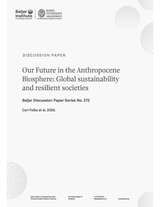 Our Future in the Anthropocene Biosphere: Global Sustainability and Resilient Societies This paper provides an interesting and enlightening overview of the current situation - where people and nature are dynamically intertwined and embedded in the biosphere, placing shocks and extreme events as part of this dynamic; where humanity has become the major force in shaping the future of the Earth system as a whole; and where the rapid expansion of the human dimension has caused climate change, simplification of life on earth, growing inequalities, and loss of resilience to deal with uncertainty and surprise. Taken together, human actions are challenging the biosphere's foundation for a prosperous development of civilizations. Read the Paper Here. 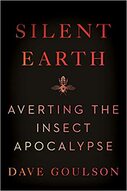 In the tradition of Rachel Carson’s groundbreaking environmental classic Silent Spring, Dave Goulson, an award-winning entomologist and conservationist, explains the importance of insects to our survival, and offers a clarion call to avoid a looming ecological disaster of our own making. 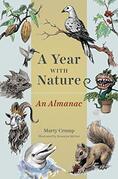 A Year with Nature by Marty Crump is an almanac like none you’ve ever seen: combining science and aesthetics, it is a daily affirmation of the extraordinary richness of biodiversity and our enduring beguilement by its beauty. With a text by herpetologist and natural history writer Marty Crump and a cornucopia of original illustrations by Bronwyn McIvor, this quirky quotidian reverie gazes across the globe, media, and time as it celebrates date appropriate natural topics ranging from the founding of the National Park Service to annual strawberry, garlic, shrimp, hummingbird, and black bear festivals. Ecological Literacy by David Orr
"Literacy is the ability to read. Numeracy is the ability to count. Ecological literacy, according to Garrett Hardin, is the ability to ask ‘What then?’ The failure to develop ecological literacy is a sin of omission and of commission. Not only are we failing to teach the basics about the earth and how it works, but we are in fact teaching a large amount of stuff that is simply wrong. By failing to include ecological perspectives in any number of subjects, students are taught that ecology is unimportant for history, politics, economics, society, and so forth." Read David Orr's full essay HERE. ------------------------------------------------ Essays from Down Under These two essays are the winners of the 2019 Nature Writing Prize in Australia, presented by the Nature Conservancy with the support of the McLean Foundation. Jenny Sinclair’s An Orchard For My Father and Sue Castrique’s On the Margins of the Good Swamp were those essays. ------------------------------------------------ John Muir and the Modern Passion for Nature, by Donald Worster Walking, by Henry David Thoreau Nature, by Ralph Waldo Emerson Alexander von Humbolt's Narratives Sea of Cortez, by John Steinbeck The Unsettling of America, by Wendell Berry Thinking Like a Mountain,by Aldo Leopold Field Notes on Science and Nature, by Michael Canfield John Muir's 1897 Case for Saving America's Forests
Seeing the Natural History Way The Aesthetic Roots of Natural History Why Natural History Matters 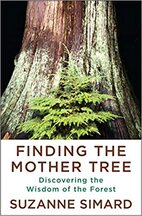 Finding the Mother Tree: Discovering the Wisdom of the Forest Suzanne Simard is a pioneer on the frontier of plant communication and intelligence; she's been compared to Rachel Carson, hailed as a scientist who conveys complex, technical ideas in a way that is dazzling and profound. Her work has influenced filmmakers (the Tree of Souls of James Cameron's Avatar) and her TED talks have been viewed by more than 10 million people worldwide. Now, in her first book, Simard brings us into her world, the intimate world of the trees, in which she brilliantly illuminates the fascinating and vital truths--that trees are not simply the source of timber or pulp, but are a complicated, interdependent circle of life; that forests are social, cooperative creatures connected through underground networks by which trees communicate their vitality and vulnerabilities with communal lives not that different from our own. 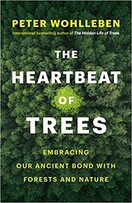 The Heartbeat of Trees: Embracing Our Ancient Bond with Forests and Nature In The Heartbeat of Trees, renowned forester Peter Wohlleben draws on new scientific discoveries to show how humans are deeply connected to the natural world. In an era of climate change, many of us fear we’ve lost our connection to nature—but Peter Wohlleben is convinced that age-old ties linking humans to the forest remain alive and intact. We just have to know where to look. 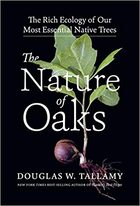 The Nature of Oaks: The Rich Ecology of Our Most Essential Native Trees Douglas Tallamy. Oaks sustain a complex and fascinating web of wildlife. The Nature of Oaks reveals what is going on in oak trees month by month, highlighting the seasonal cycles of life, death, and renewal. From woodpeckers who collect and store hundreds of acorns for sustenance to the beauty of jewel caterpillars, Tallamy illuminates and celebrates the wonders that occur right in our own backyards. He also shares practical advice about how to plant and care for an oak, along with information about the best oak species for your area. The Nature of Oaks will inspire you to treasure these trees and to act to nurture and protect them. 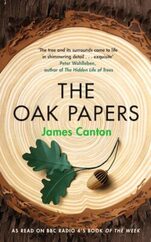 Also read the December 2020 review of The Oak Papers by Dr. James Canton at the Well Read Naturalist 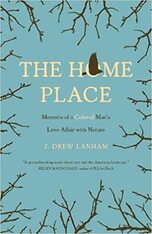 From the fertile soils of love, land, identity, family, and race emerges The Home Place, a big-hearted, unforgettable memoir by ornithologist J. Drew Lanham. Dating back to slavery, Edgefield County, South Carolina―a place “easy to pass by on the way somewhere else”―has been home to generations of Lanhams. In The Home Place, readers meet these extraordinary people, including Drew himself, who over the course of the 1970s falls in love with the natural world around him. As his passion takes flight, however, he begins to ask what it means to be “the rare bird, the oddity.” By turns angry, funny, elegiac, and heartbreaking, The Home Place is a remarkable meditation on nature and belonging, at once a deeply moving memoir and riveting exploration of the contradictions of black identity in the rural South―and in America today. 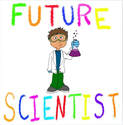 Science Magazine's 2020 "Fodder for future scientists" has a number of nature-related books (highlighted). Check them out. 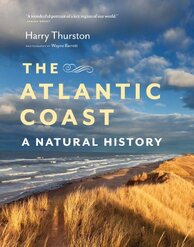 I just finished reading "The Atlantic Coast - A Natural History" by Harry Thurston. Probably the best book I have read about the east coast of North America from Cape Hatteras NC to Cape Chidley Labrador. To quote from the introduction: "...this book includes chapters on the geological origins of this region, the major forest realms that clothe the coast, and the mosaic of freshwater and marine ecosystems found there. It also describes, in intriguing detail, the plants and animals native to each of these habitats." The book's photography also puts it in a class by itself. Just spectacular. Highly recommended for all you naturalists (and non-naturalists) out there. -- Jack Price 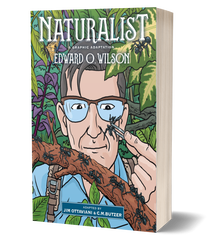 A classic, re-imagined - great for kids! "This hearty graphic memoir is poised to inspire a new generation of naturalists." --Publishers Weekly "E.O. Wilson comes off looking like the super hero that he truly is. I highly recommend this book for kids of all ages who want to learn a lot about conservation and commitment.... Get this book!" --E-Magazine Regarded as one of the world’s preeminent biologists, Edward O. Wilson spent his boyhood exploring the forests and swamps of south Alabama and the Florida panhandle, collecting snakes, butterflies, and ants—the latter to become his lifelong specialty. His memoir Naturalist, called “one of the finest scientific memoirs ever written” by the Los Angeles Times, is an inspiring account of Wilson’s growth as a scientist and the evolution of the fields he helped define. This graphic edition, adapted by Jim Ottaviani and illustrated by C.M.Butzer, brings Wilson’s childhood and celebrated career to life through dynamic full-color illustrations and Wilson’s own lyric writing. In this adaptation of Naturalist, vivid illustrations draw readers in to Wilson’s lifelong quest to explore and protect the natural world. His success began not with an elite education but an insatiable curiosity about Earth’s wild creatures, and this new edition of Naturalist makes Wilson’s work accessible for anyone who shares his passion. On every page, striking art adds immediacy and highlights the warmth and sense of humor that sets Wilson’s writing apart. Naturalist was written as an invitation—a reminder that curiosity is vital and scientific exploration is open to all of us. Each dynamic frame of this graphic adaptation deepens Wilson’s message, renewing his call to discover and celebrate the little things of the world. 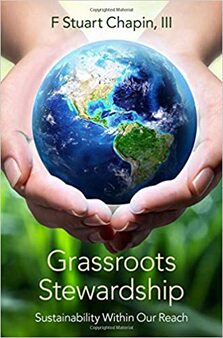 In a society more concerned with how to cope with existential dread than how to make actionable changes to save the planet, a surprisingly large number of Americans identify as environmentalists. What can individual people do to lessen human impacts on the planet? This is not an easy question. Most research is focused on large-scale changes that go beyond anything an individual can accomplish, and people are left feeling defeated rather than inspired to make changes in their everyday lives. Change starts at home, and F Stuart Chapin, III has assembled a book for people who want to learn more about global changes and, more importantly, what they can do about them, starting today. Grassroots Stewardship approaches our current situation with an educated sense of hope and positivity. This book emphasizes actions by individuals, rather than governmental or corporate institutions, to trigger transformational change. Readers will learn what they can do to most significantly transform their communities and the planet with more sustainable pathways. Read more about Terry Chapin's stewardship ideas 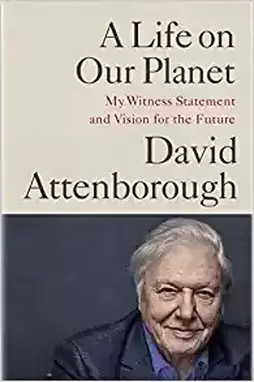 In this scientifically informed account of the changes occurring in the world over the last century, award-winning broadcaster and natural historian shares a lifetime of wisdom and a hopeful vision for the future. See the world. Then make it better. I am 93. I've had an extraordinary life. It's only now that I appreciate how extraordinary. As a young man, I felt I was out there in the wild, experiencing the untouched natural world - but it was an illusion. The tragedy of our time has been happening all around us, barely noticeable from day to day -- the loss of our planet's wild places, its biodiversity. I have been witness to this decline. A Life on Our Planet is my witness statement, and my vision for the future. It is the story of how we came to make this, our greatest mistake -- and how, if we act now, we can yet put it right. We have one final chance to create the perfect home for ourselves and restore the wonderful world we inherited. All we need is the will do so.
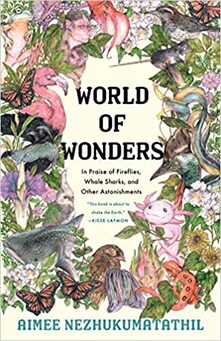 From beloved, award-winning poet Aimee Nezhukumatathil comes a debut work of nonfiction―a collection of essays about the natural world, and the way its inhabitants can teach, support, and inspire us. As a child, Nezhukumatathil called many places home: the grounds of a Kansas mental institution, where her Filipina mother was a doctor; the open skies and tall mountains of Arizona, where she hiked with her Indian father; and the chillier climes of western New York and Ohio. But no matter where she was transplanted―no matter how awkward the fit or forbidding the landscape―she was able to turn to our world’s fierce and funny creatures for guidance. “What the peacock can do,” she tells us, “is remind you of a home you will run away from and run back to all your life.” The axolotl teaches us to smile, even in the face of unkindness; the touch-me-not plant shows us how to shake off unwanted advances; the narwhal demonstrates how to survive in hostile environments. Even in the strange and the unlovely, Nezhukumatathil finds beauty and kinship. For it is this way with wonder: it requires that we are curious enough to look past the distractions in order to fully appreciate the world’s gifts. Warm, lyrical, and gorgeously illustrated by Fumi Nakamura, World of Wonders is a book of sustenance and joy. 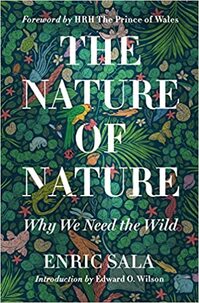 Enric Sala wants to change the world--and in this compelling book, he shows us how. Once we appreciate how nature works, he asserts, we will understand why conservation is economically wise and essential to our survival. Here Sala, director of National Geographic's Pristine Seas project (which has succeeded in protecting more than 5 million sq km of ocean), tells the story of his scientific awakening and his transition from academia to activism--as he puts it, he was tired of writing the obituary of the ocean. His revelations are surprising, sometimes counterintuitive: More sharks signal a healthier ocean; crop diversity, not intensive monoculture farming, is the key to feeding the planet. Using fascinating examples from his expeditions and those of other scientists, Sala shows the economic wisdom of making room for nature, even as the population becomes more urbanized. In a sober epilogue, he shows how saving nature can save us all, by reversing conditions that led to the coronavirus pandemic and preventing other global catastrophes. With a foreword from Prince Charles and an introduction from E. O. Wilson, this powerful book will change the way you think about our world--and our future. 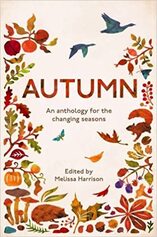 An interesting book. You can dive into it almost anywhere. A great collection of prose and poetry for the season of Autumn. This is a really beautiful book, great for dipping in and out of and with a really cosy feel.  The late Anna Botsford Comstock was the founder and first head of the Department of Nature Study at Cornell University and the first woman to be appointed to the Cornell faculty. Written originally for elementary school teachers, this book is as valid and helpful today as it was when it was first written in 1911. 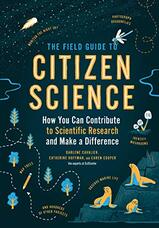 Learn how monitoring the night sky, mapping trees, photographing dragonflies, and identifying mushrooms can help save the world! Citizen science is the public involvement in the discovery of new scientific knowledge. A citizen science project can involve one person or millions of people collaborating towards a common goal. It is an excellent option for anyone looking for ways to get involved and make a difference. The Field Guide to Citizen Science, from the expert team at SciStarter, provides everything you need to get started. You’ll learn what citizen science is, how to succeed and stay motivated when you’re participating in a project, and how the data is used. The fifty included projects, ranging from climate change to Alzheimer’s disease, endangered species to space exploration, mean sure-fire matches for your interests and time. Join the citizen science brigade now, and start making a real difference! 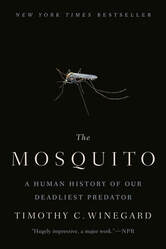 A pioneering and groundbreaking work of narrative nonfiction that offers a dramatic new perspective on the history of humankind, showing how through millennia, the mosquito has been the single most powerful force in determining humanity’s fate. Why was gin and tonic the cocktail of choice for British colonists in India and Africa? What does Starbucks have to thank for its global domination? What has protected the lives of popes for millennia? Why did Scotland surrender its sovereignty to England? What was George Washington’s secret weapon during the American Revolution? The answer to all these questions, and many more, is the mosquito. Across our planet since the dawn of humankind, this nefarious pest, roughly the size and weight of a grape seed, has been at the frontlines of history as the grim reaper, the harvester of human populations, and the ultimate agent of historical change. As the mosquito transformed the landscapes of civilization, humans were unwittingly required to respond to its piercing impact and universal projection of power. The mosquito has determined the fates of empires and nations, razed and crippled economies, and decided the outcome of pivotal wars, killing nearly half of humanity along the way. She (only females bite) has dispatched an estimated 52 billion people from a total of 108 billion throughout our relatively brief existence. As the greatest purveyor of extermination we have ever known, she has played a greater role in shaping our human story than any other living thing with which we share our global village. Imagine for a moment a world without deadly mosquitoes, or any mosquitoes, for that matter? Our history and the world we know, or think we know, would be completely unrecognizable. Driven by surprising insights and fast-paced storytelling, The Mosquito is the extraordinary untold story of the mosquito’s reign through human history and her indelible impact on our modern world order. 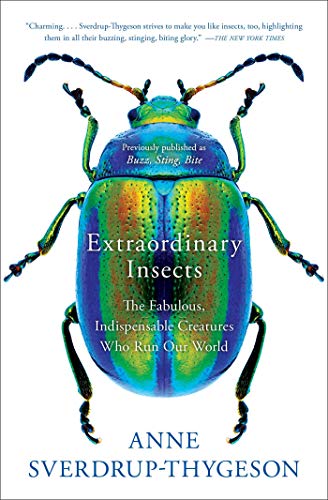 This enthusiastic, witty, and informative introduction to the world of insects and why we could not survive without them is “a joy” (The Times, London) and “charming...Highlighting them in all their buzzing, stinging, biting glory” (The New York Times Book Review). Insects comprise roughly half of the animal kingdom. They live everywhere--deep inside caves, 18,000 feet high in the Himalayas, inside computers, in Yellowstone’s hot springs, and in the ears and nostrils of much larger creatures. There are insects that have ears on their knees, eyes on their penises, and tongues under their feet. Most of us think life would be better without bugs. In fact, life would be impossible without them. Most of us know that we would not have honey without honeybees, but without the pinhead-sized chocolate midge, cocoa flowers would not pollinate. No cocoa, no chocolate. The ink that was used to write the Declaration of Independence was derived from galls on oak trees, which are induced by a small wasp. The fruit fly was essential to medical and biological research experiments that resulted in six Nobel prizes. Blowfly larva can clean difficult wounds; flour beetle larva can digest plastic; several species of insects have been essential to the development of antibiotics. Insects turn dead plants and animals into soil. They pollinate flowers, including crops that we depend on. They provide food for other animals, such as birds and bats. They control organisms that are harmful to humans. Life as we know it depends on these small creatures.  An excellent read (in my opinion). A bestseller on Amazon.com within months of its first release, Alan AtKisson's debut book quickly became a modern classic of sustainability literature. Global companies, grassroots groups, university courses, government agencies, and even the US Army ordered it by the box. Now fully revised and updated, Believing Cassandra: How to be an Optimist in a Pessimist's World is even more relevant, fresh, and motivating than when it first appeared in 1999. In a style that's refreshingly candid and vivid, with unforgettable personal anecdotes, AtKisson provides us with a bridge over the sea of despair, and shows us how to catch the wave to an enticing, sustainable future. He empowers the reader to join the pioneers who created the ideas, techniques and practices of sustainable living - the people who prove Cassandra's warnings wrong, by believing in them, and taking strategic action. 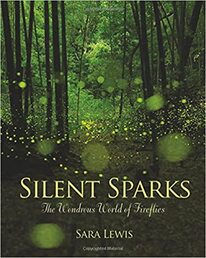 Silent Sparks: The Wondrous World of Fireflies By Sara Lewis For centuries, the beauty of fireflies has evoked wonder and delight. Yet for most of us, fireflies remain shrouded in mystery: How do fireflies make their light? What are they saying with their flashing? And what do fireflies look for in a mate? In Silent Sparks, noted biologist and firefly expert Sara Lewis dives into the fascinating world of fireflies and reveals the most up-to-date discoveries about these beloved insects. From the meadows of New England and the hills of the Great Smoky Mountains, to the rivers of Japan and mangrove forests of Malaysia, this beautifully illustrated and accessible book uncovers the remarkable, dramatic stories of birth, courtship, romance, sex, deceit, poison, and death among fireflies. The nearly two thousand species of fireflies worldwide have evolved in different ways―and while most mate through the aerial language of blinking lights, not all do. Lewis introduces us to fireflies that don't light up at all, relying on wind-borne perfumes to find mates, and we encounter glow-worm fireflies, whose plump, wingless females never fly. We go behind the scenes to meet inquisitive scientists who have dedicated their lives to understanding fireflies, and we learn about various modern threats including light pollution and habitat destruction. In the last section of the book, Lewis provides a field guide for North American fireflies, enabling us to identify them in our own backyards and neighborhoods. This concise, handy guide includes distinguishing features, habits, and range maps for the most commonly encountered fireflies, as well as a gear list. A passionate exploration of one of the world's most charismatic and admired insects, Silent Sparks will inspire us to reconnect with the natural world. 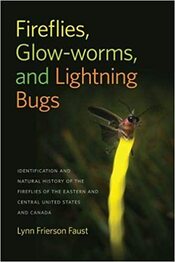 Fireflies, Glow-worms, and Lightning Bugs is the first-ever comprehensive firefly guide for eastern and central North America. It is written for all those who want to know more about the amazing world of lightning bugs and learn the secrets hidden in the flash patterns of the 75+ species found in the eastern and central United States and Canada. As an independent researcher working with numerous university teams, naturalist Lynn Frierson Faust, “The Lightning Bug Lady,” has spent decades tracking the behavior and researching the habitats of these fascinating creatures. Based on her twenty-five years of fieldwork, this book is intended to increase understanding and appreciation of bioluminescent insects while igniting enthusiasm in a fun and informative way. Species accounts are coupled with historical backgrounds and literary epigraphs to engage and draw readers young and old into the world of these tiny sparklers. A chart documenting the flash patterns of the various species will aid in identification. Clear photos illustrate the insects’ distinguishing physical characteristics, while habitats, seasonality, and common names are provided in easy-to-understand yet scientifically accurate language. The guide will be welcomed by everyone who wants to learn more about fireflies’ and glow-worms’ unique traits and fragile niche in the ecosystem. 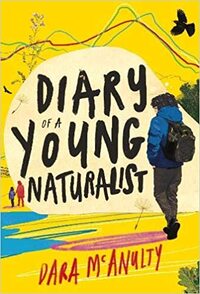 What a gorgeous book! It has opened my eyes wider to the abundance and beauty of nature all around us as we shelter at home. I've enjoyed this book on so many levels. It celebrates the diversity of nature and the neurodiversity of people in such a kind way, and it emphasizes the need to protect and respect both nature and the people in it. And the writing is lush, lyrical, and evocative - it is a balm during this stressful time. And it also allowed me to armchair travel back to the beautiful landscapes of Northern Ireland. As a high school teacher, I can't wait to share it with my students - it's so inspiring what Dara McAnulty has accomplished and shared in this book - Christina A. Krieg [I recently ordered this book and I can echo everything the above reviewer says. This is a wonderful book and a must read - J. Stehm] Diary of a Young Naturalist chronicles the turning of 15-year-old Dara McAnulty's world. From spring and through a year in his home patch in Northern Ireland, Dara spent the seasons writing. These vivid, evocative and moving diary entries about his connection to wildlife and the way he sees the world are raw in their telling. "I was diagnosed with Asperger's/autism aged five ... By age seven I knew I was very different, I had got used to the isolation, my inability to break through into the world of talking about football or Minecraft was not tolerated. Then came the bullying. Nature became so much more than an escape; it became a life-support system." Diary of a Young Naturalist portrays Dara's intense connection to the natural world, and his perspective as a teenager juggling exams and friendships alongside a life of campaigning. "In writing this book," Dara explains, "I have experienced challenges but also felt incredible joy, wonder, curiosity and excitement. In sharing this journey my hope is that people of all generations will not only understand autism a little more but also appreciate a child's eye view on our delicate and changing biosphere." |
Reading CornerPlease send your book ideas to the Reading Corner. 
Categories
All
Archives
February 2023
|
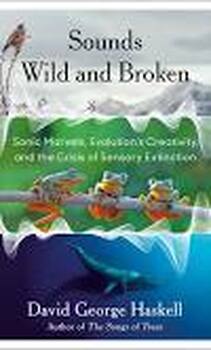

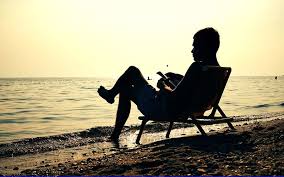
 RSS Feed
RSS Feed